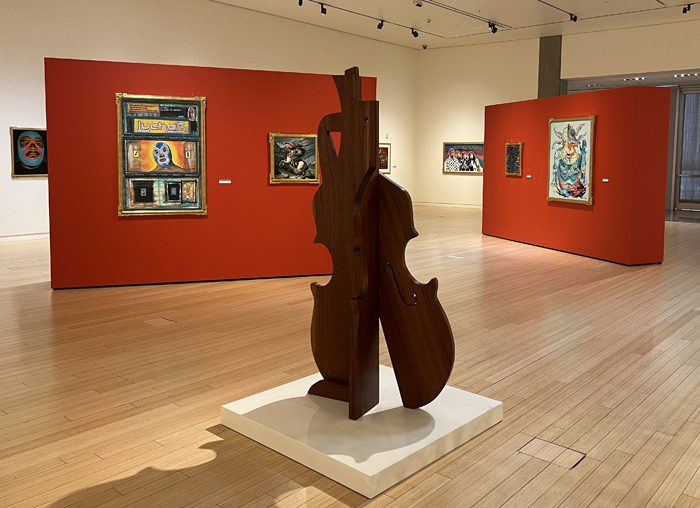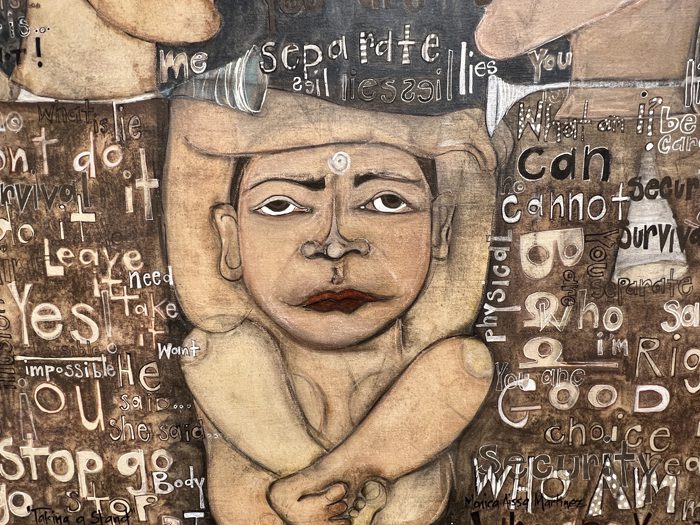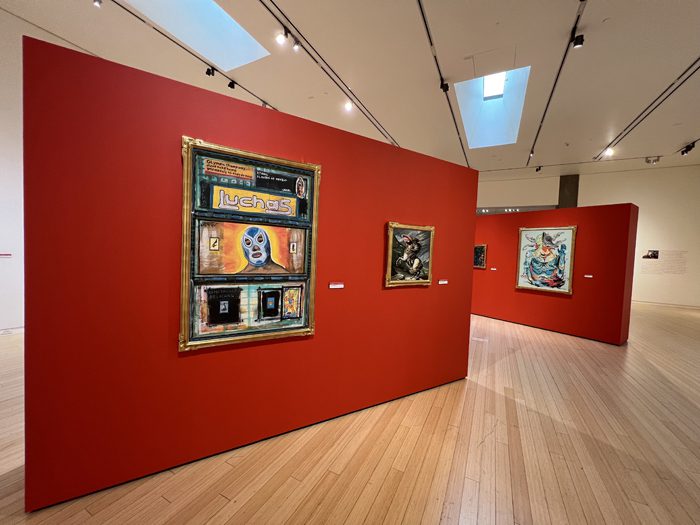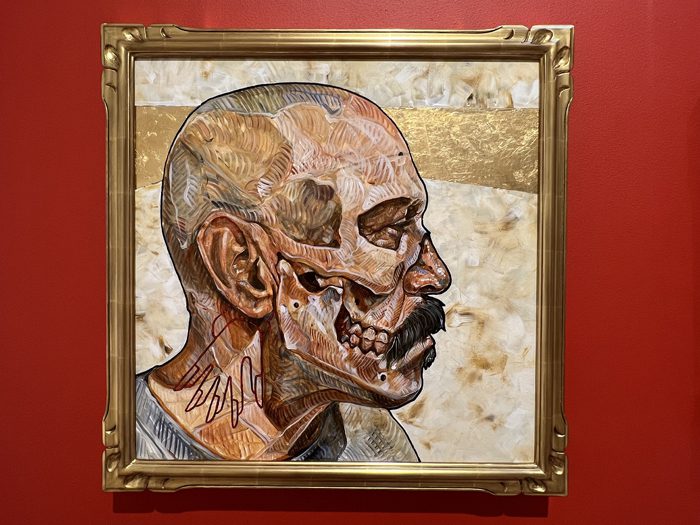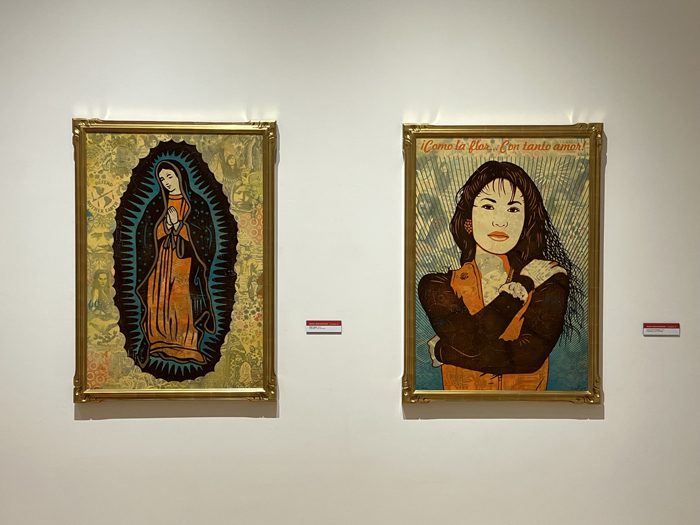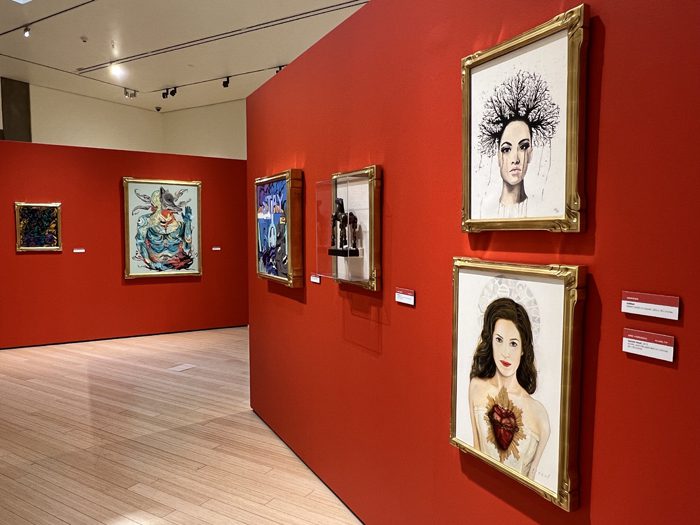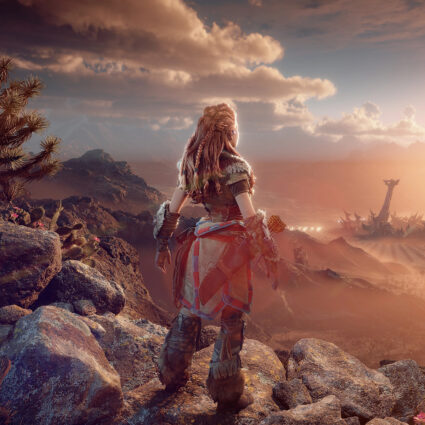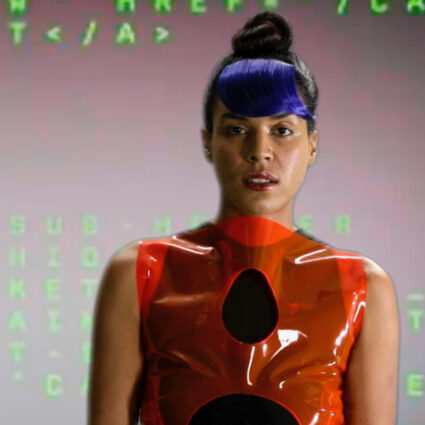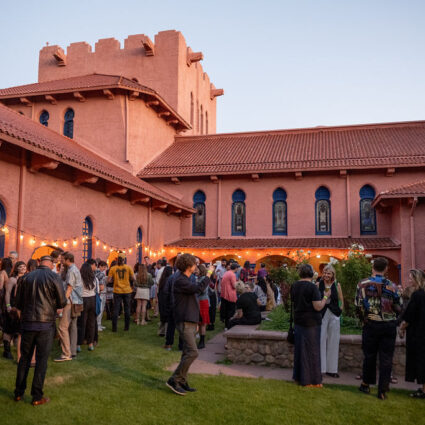Somos Southwest at Mesa Contemporary Arts Museum delivers a muted homage to the Chicano Arts Movement.

Somos Southwest
May 13–August 7, 2022
Mesa Contemporary Arts Museum
It’s been fifty years since Mexican American civil rights activist Cesar Chavez undertook a hunger strike in Phoenix to protest the plight of itinerate farmworkers in the Southwest during the height of the Chicano Movement that called for social and political change.
Today, more than thirty artists influenced by the Chicano Art Movement have works on view at Mesa Contemporary Arts Museum in Mesa, Arizona, a city located just east of Phoenix. The exhibition Somos Southwest includes select works from the Judson C. Ball and Nancy Sue Ball Collection of nearly 300 objects.
Unfortunately, the exhibition merely whispers to that movement, rather than reverberates with the passion of the protests that helped to fuel it.
The most overtly political pieces in the show include Conquista: Fernandez (2015), an oil on panel painting by Phoenix artist Darrin Armijo-Wardle that references Jacques-Louis David’s Napoleon Crossing the Alps from the early 19th century. Armijo-Wardle presents a figure he calls Fernandez Bonaparte riding his horse as if going into battle on cliffs topped by an American flag. Other nods to social or political revolution are more subtle, and comprise a small fraction of the art presented here. And because it’s drawn from a collection, the exhibition doesn’t include murals that could have echoed the long tradition of Mexican and Chicano street art as a form of protest.
Even so, the exhibition reflects several common threads within the movement, including family, tradition, religion, and cultural identity.
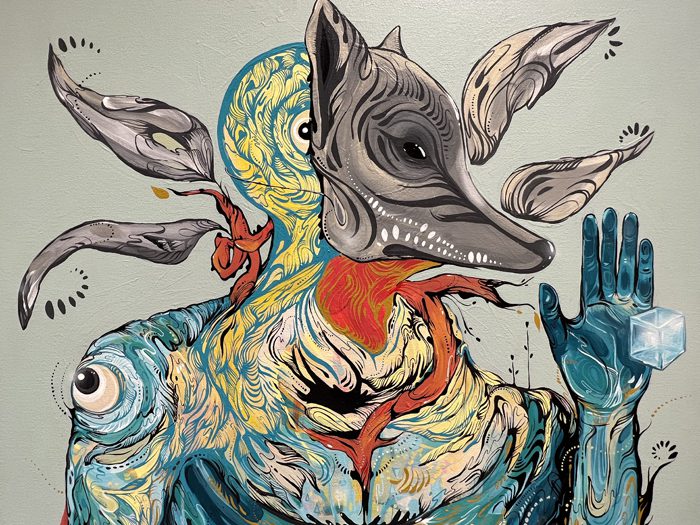
Works by El Mac and El Moisés incorporate masks from the lucha libre wrestling tradition. Pieces by Robert Andrews Gentile and Trenton Larson channel elements of graffiti culture. Other artists, including Mesa-based Mando Rascon, center religious iconography through portrayals of Jesus or Our Lady of Guadalupe. Meanwhile, artists Tato Caraveo and Hector Silva deliver vastly different portraits of Frida Kahlo.
Featured artists work in several media, including collage, drawing, painting, sculpture, and mixed media. About one-third of the pieces are acrylic or oil paintings, and only a handful are three-dimensional, which means a wide swath of creativity rooted in the Chicano Arts Movement isn’t well represented here.
Despite the central role of printmaking to the movement, the exhibition includes just one mono silkscreen, by Phoenix artist Emily Yvette Costello, and two screenprints by Los Angeles artist Ernesto Yerena Montejano.
Museum materials note that most but not all of these artists identify as Chicano/a, by the way.
Two surrealist acrylic paintings are among the exhibition’s most compelling works. Arizona-based artist Ashley Macias suggests a hybridity of human and coyote forms with Spirit Animal (2015-16). California-based artist Jaime “Germs” Zacarias imagines a luchador whose mask sprouts tentacles in Nacho Cheese (2016).

Other highlights include acrylic paintings by Ricardo Estrada, a Los Angeles native who infuses his portraiture with iconography from ancient Mexican culture, and sculptures by two Arizona artists. The exhibition includes Rafael Navarro’s stunning mahogany iteration of an upright bass player and a pair of carved mahogany masks by Zarco Guerrero.
Despite the quality of work in Somos Southwest, the show’s title is clearly a misnomer. Nearly one-third of featured artists live and work in Arizona, and almost one-fourth are based in California. There’s just one artist each from Nevada and New Mexico, and none from Colorado, Texas, or Utah. Likewise, most works were created in a relatively short time frame, between 2010 and 2015, although the show spans the period from 1994 to 2019.
Basically, the exhibition reflects a very narrow slice of the Southwest.
That slice holds particular appeal for those who follow the Phoenix arts scene.
The exhibition includes two pieces by Pablo Luna, a pioneer of the Phoenix graffiti scene who died in April 2022. One of his untitled mixed-media works from the Balls’ collection is part of a small memorial inside the museum, and another, Mariachis, hangs in the gallery housing Somos Southwest.
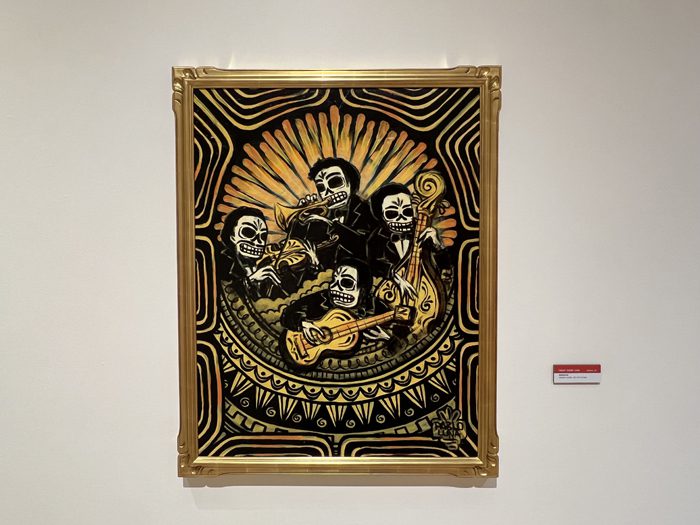
The show also includes a handful of artworks that illuminate the evolving styles of particular Phoenix-based artists, including Monica Aissa Martinez and JB Snyder.
Somos Southwest includes Martinez’s Taking a Stand (2007-08) and It’s All Intimate (2013). The former pairs human forms in earthen tones with dozens of words; the latter includes a colorful human form with cellular components but no text. The show also includes an untitled 2008 piece by Snyder that channels his facility with line work and bold colors but doesn’t incorporate the characteristic curved geometrics of his current work.
As a window into ways the Chicano Art Movement influenced contemporary artists working across the Southwest, the exhibition falls short by virtue of its relatively confined geographic range and scarcity of works embodying the direct action at the heart of the Chicano Movement.
Still, it serves as a quiet homage to activists and artists who’ve fought for social justice, and creates a meditative space that centers Chicano voices.
